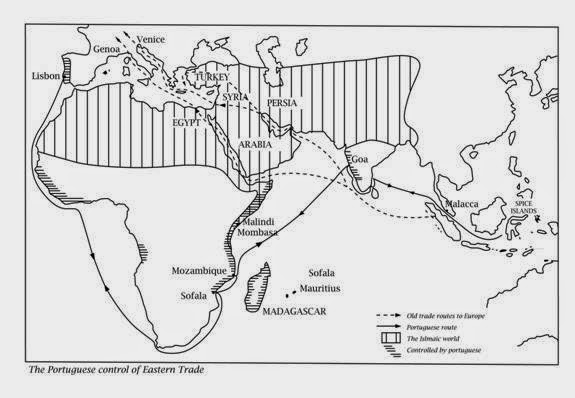The Shabelle Bantus are former Bantu slaves from Mogadishu (a port where slaves were bought and sold) who simply moved up the river.
The Jubba Bantus are former Bantu slaves from Kismaayo (a port where slaves were bought and sold) and simply moved up the river.
Only on the Tana river (which is Kenya, not Somalia) did Bantus naturally migrate there. NOT in Somalia.
No.
Cassanelli: 1982:150:
"By the start of the 19th century, the upper Shabeele River served as a rough dividing line between two long-distance caravan networks in ;the Somali Peninsula: the one whose trade flowed northward through Harar or Dhagaxbuur in the Ogaadeen to the ports of Seylac (Zeila), Bullaxaar, and Berbera on the Gulf of Aden, and the other whose routes terminated at the Benaadir towns of Muqdishso, Marka and Baraawe. "
The name "Kismaayo" is Bajuni Tikulu for "northern port" and was their last settlement at the northern end of a chain of settlements on the islands and near-shore coast of southern Somalia and Kenya, south of the Jubba. In the 19th century it was a recent settlement, from after the period of Sabaki Bantu habitation that ended in the early 15th century. Notice the word "Sabaki" in this Wiki entry:
"
Bajuni dialect - Wikipedia
https://en.wikipedia.org/wiki/Bajuni_dialectLanguage family · Niger–Congo · Atlantic–Congo · Benue–Congo · Bantoid · Bantu · Northeast Coast Bantu · Sabaki · Swahili.
Bajuni.
Language codes. ISO 639-3, –. Glottolog · baju1245 · Guthrie code. G.41.
Bajuni (Kibajuni), also known as
Tikulu (Tikuu), is a variety of Swahili spoken by the
Bajuni ..."
The Kismaayo of the Bajuni was a small fishing village on the island that became Kismaayo port in 1966. Guillain (Documents 3:173) says northern somalis from Berbera began visiting Baraawe for trade by at least 1847. One wealthy merchant got permission from Sultan Said of Zanzibar to
create a grain entrepot at Munghia, but was sabotaged by Sultan Yusuf of Geledi, who wanted that port and trade for himself. "In the years that followed (Cassanelli 82:180), increasing numbers of traders from Hobya and Majeerteenia came in dhows to Marka and to the
new town in Kismaayo"
Sultan Barghash of Zanzibar put Kismaayo on the map when he established a garrison there in either 1872 or 1881. The sources vary.
Look up the Gosha Sultanate and Nassib Bundo for yourself. Also the East African slave trade and the Zanzibari Sultanate. I don't want you thinking I am putting you on.
There were still some Bantu, either Pwani or Sabaki, in the Jubba river valley when escaped slaves began arriving from the plantations in the Lower Shabeele valley about 1836. They had early fights with the Warday and Aweer, but soon reached peaceful living arrangements.. By 1890 they were sufficiently united and large in numbers they were able to defeat the combined Ogaden clans west of the Jubba. The Gosha Sultanate under Nassib Bundo ruled from Yontoy to Sakow on the Jubba and had treaties with the British, (who freed slaves taken off ships in the Indian Ocean there), the Sultans of Zanzibar, the Tunni, Baraawe and the Biimaal. Until the Italians, the Gosha controlled the Lower Jubba above Yontoy.
There were no slave plantations on the Jubba and no significant slave market at Kismaayo. The bulk of the slaves were landed at Baraawe, Marka and Muqdisho, near the plantations, which were in the Shabeele valley.
 .
.
